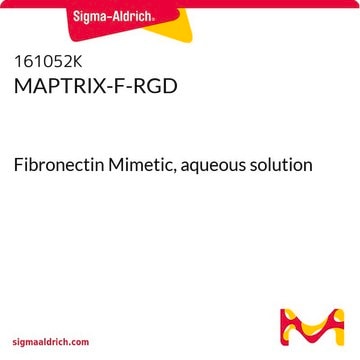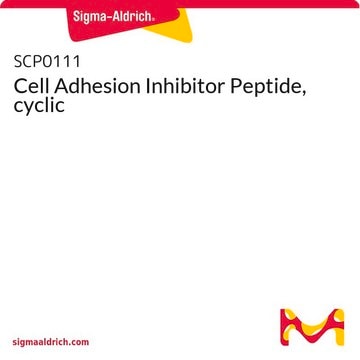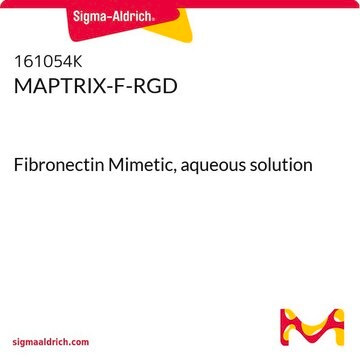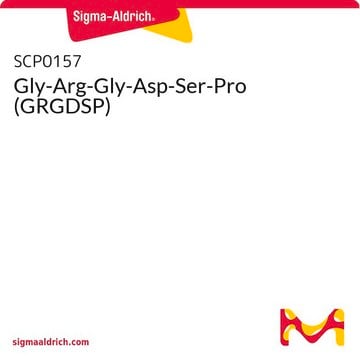TRUERGD
TrueGel3D RGD
Integrin Adhesion Peptide
Synonym(e):
3D cell culture matrix
About This Item
Empfohlene Produkte
Versandbedingung
dry ice
Lagertemp.
−20°C
Allgemeine Beschreibung
Anwendung
Leistungsmerkmale und Vorteile
*Doa : 8-amino-3,6-dioxaoctanoic acid
Komponenten
Rechtliche Hinweise
Lagerklassenschlüssel
10 - Combustible liquids
Analysenzertifikate (COA)
Suchen Sie nach Analysenzertifikate (COA), indem Sie die Lot-/Chargennummer des Produkts eingeben. Lot- und Chargennummern sind auf dem Produktetikett hinter den Wörtern ‘Lot’ oder ‘Batch’ (Lot oder Charge) zu finden.
Besitzen Sie dieses Produkt bereits?
In der Dokumentenbibliothek finden Sie die Dokumentation zu den Produkten, die Sie kürzlich erworben haben.
Kunden haben sich ebenfalls angesehen
Artikel
TrueGel3D™ synthetic hydrogel can be used to study co-culture of tumor and stromal cells.
Fibroblasts that are present in the stroma secrete glycoproteins and polysaccharides to form extracellular matrix. They maintain the structural integrity within the connective tissue and play a key role in cancer, chronic obstructive pulmonary diseases, idiopathic pulmonary fibrosis, scleroderma and several other diseases.
Troubleshoot TrueGel3D™ hydrogel formation and cell viability issues with RGD-degradable polymer and CD cell-degradable crosslinker.
TrueGel3D™ is a synthetic hydrogels platform for 3D cell culture that aim to mimic the natural extracellular environment for more physiological culture conditions
Protokolle
TrueGel3D™ is a chemically defined hydrogel for 3D cell growth, facilitating microchannel filling with slow gelation.
TrueGel3D™ hydrogel enables cell encapsulation for 3D culture, mimicking native tissue environment with chemically defined properties.
An advanced protocol is available for TrueGel 3D kits for 3D cell culture for peptides concentration or stiffness optimisation
Unser Team von Wissenschaftlern verfügt über Erfahrung in allen Forschungsbereichen einschließlich Life Science, Materialwissenschaften, chemischer Synthese, Chromatographie, Analytik und vielen mehr..
Setzen Sie sich mit dem technischen Dienst in Verbindung.









